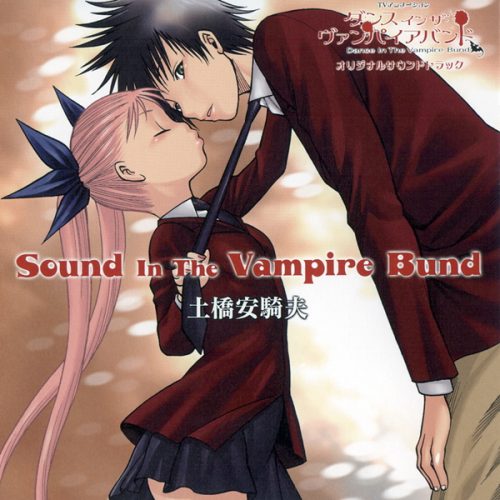
Introduction
The Dance in the Vampire Bund is a manga with more than twenty volumes that together create one of the best stories in manga. The exciting tale of the vampire queen, her consort werewolf, and the bund, they've created is riveting drama. The homeland they create needs to be constantly defended from internal and external centers of power that push for their downfall. The romance, drama, and political intrigue are interesting enough on the surface but the lessons of what the bund and the vampires represent is a far greater allegory.
The Displaced People
The fall of the vampire kingdom Nercopolis a thousand years ago left the vampire as a cast out people without a homeland. The vampire literally had to live in the shadows among the other peoples of the world. The population is often a vulnerable minority in whatever country they are living in. The children of the night are also a transient population because vampire families/clans are unable to live in the same community for an extended period because their immortality could lead them to be discovered. The purchase of Tokyo Landfill 0 by Mina Tepes and the establishment of the Bund gave the vampire queen the chance to call and for all the vampire diaspora to move there to live in the protection of a new homeland. The vampire queen’s promotion of her own Aliyah movement to the small strip of land in Tokyo Bay runs in parallel with other peoples of the world who mainly survive as a diaspora.
The Multiple Meaning of Bund
The Merriam-Webster dictionary defines a bund as an embankment used especially in India to control the flow of water. It also refers to it as an embanked thoroughfare along a river or the sea, especially in the Far East. The word is also often capitalized as Bund when referring to Shanghai, China between the 1860’s to the 1930’s where it was the rich and powerful center of the foreign establishment in Shanghai. The foreign companies operating in a legally protected treaty port that acted as a semi-autonomous state within China. A bund can also refer to a secular Jewish movement in 1900’s Imperial Russia and a major political force in Poland. Vladimir Medem a leader of the movement in 1904 put forth his idea of the bund as assemblies of national (ethnic) groups within a larger nation. He said, “Each national group would create a separate movement. All citizens belonging to a given national group would join a special organization that would hold cultural assemblies in each region and a general cultural assembly for the whole country. The assemblies would be given financial powers of their own: either each national group would be entitled to raise taxes on its members. . .The national movements would be subject to the general legislation of the state, but in their own areas of responsibility they would be autonomous and none of them would have the right to interfere in the affairs of the others"
We can see that the citizens of the Vampire Bund being treated like that under their treaty with Japan in the administrative zone that stretches to a portion of the mainland of Japan. The definition regardless of the interpretation of bund is used fits nearly all the scenerios.
Persecution of a People
The vampire are a people. You can be a vampire and be a citizen from Japan, Iran, or England. You look just like your neighbor, but, are different. The world of Dance in the Vampire Bund: Age of the Scarlett Order is one where anti-vampire sentiment has taken over many governments. The vampires who once lived side by side with their fellow citizens now live on edge fearing they will be discovered. A government that may have treated them equally in the eyes of the law now either looks the other way when discrimination happens or actively participates in that discrimination. We watch several vampire refugees attempt to flee to the west coast of the United States where a ship is set to take them to the bund and safety. The system that gets them there is directly modeled after the Underground Railroad that helped guide African American slaves to freedom in the late 19th century. The people that hunt them, seemingly with the government’s permission, are religious zealots who drape themselves in God and the flag. The zealots say it's their duty to God and country for them to capture and kill their fellow citizens for just being vampires. The illustration in the manga of effigies of vampires hung from trees with nooses around their necks drive home the level of hatred and dehumanization these bigots feel. The parallel between many of the minorities who had their countries turn on them in the early 20th century in Europe is an easy one to make.
Messiah Mina
Queen Mina Tepes, the vampire that revealed their kind to the world and built her people a homeland after 1000 years, is their savior. She wants nothing more than for her people to live in peace and safety with the rest of the world. Mina even physically leads them out of the hostile country of America like Moses lead his people out of Egypt. She even paraphrases the beatitudes or the Statue of Liberty, depending on how you look at it when she tells her people, “You who are weak. You who are oppressed. You who have lost your home, do not despair, this world exists for you.” We even have her “killed” by a US Airstrike only to rise three days later and lead her people to their promised land.
Final Thoughts

The best stories are all structured as allegories. The place we often find those allegories in the modern age is in the pages of science fiction and fantasy and in this case a fantasy manga. We sometimes need to see the world around us through a filter that scrubs out the complication of daily life and lets us concentrate on the actual problems of the world. The Dance in the Vampire Bund series as a whole is filled with other examples of that allegorical lens. We know the allegories may be interpreted differently by each person so the take away may be slightly different. The key point is that each story makes us think and discuss the issues of the world without getting bogged down in the bullsh*t.
Recommended Post
6 Anime Like Dance in the Vampire Bund [Recommendations]
Recommended Post


